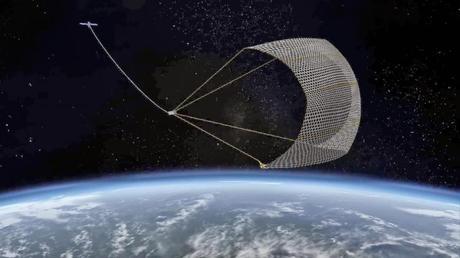
Man has achieved a tremendous success in each and every area it explores. Where no one thought about going beyond Earth, man has even stepped on moon and in space. Space is full of discoveries and adventurous stuff. The seven time winning movie “Gravity” has really shown something new to the world. The movie portrays astronauts who succeed in dodging the satellites that were consistently falling and colliding. Currently, the biggest threat in space is the issue of Space Debris. As our Mother Earth also comprise of debris, similarly space too has certain wastes that are quite dangerous if not caught at right time.
Hence, ESA has come up with its Clean Space Initiative in which it aims at developing satellites that can travel in space and collect the space debris. They have also named this process as Space Net Fishing. The satellites collect this space debris similarly to catching fishes in net. ESA has recently proposed this initiative which will be discussed in the month of May mainly concentrating on E.DeOrbit mission.
ESA believes in collecting the space debris in order to prevent any misshaping. As per the study conducted by ESA, it has found that there is a presence of 17000 objects that can be tracked easily. These objects vary in different sizes. They can be like a coffee bean or a coffee cup as well. Hence it might turn out to be risky for space travelers or astronauts. Although it might not sound to be dangerous, but due to an orbital velocity these space debris can really hit a person like a steel part or hand grenade or a bullet. This space debris can move anytime with great force. They sound very high and emit sound like a bomb. These particles can damage human life and space craft as well. They bang with other debris as well. Thus, it leads to formation of more debris in space.
About E.De Orbit:
ESA plans to clear the space debris with the help of E.DeOrbit. It is a satellite which will act as a Fishing Net, thus collecting the space debris. E.DeOrbit is developed with the purpose of clearing space debris at an altitude of 800 Km to 1000 Km. The weight of this satellite is 1600 Kgs. The satellite can fly really high like ESA’s Vega Rockets. However there are some challenges as well. It is very necessary to create amicability between E.DeOrbit and the space objects. Hence it is essential to meet objects that are unconditional, tumbling and inoperative in nature. Hence, space craft monitor these objects from great distance. They use navigational system, camera, propulsion system etc.
ESA has suggested two ways of capturing the space debris, namely, nets and mechanical tentacles. This satellite is well capable of utilizing both of these methods for capturing space debris. In net method, this satellite releases a net at the end of tether. As the weight starts spreading, the net also spreads and tightens the tether. In mechanical tentacles method, the satellite goes near to the space debris and holds the targeted debris.

